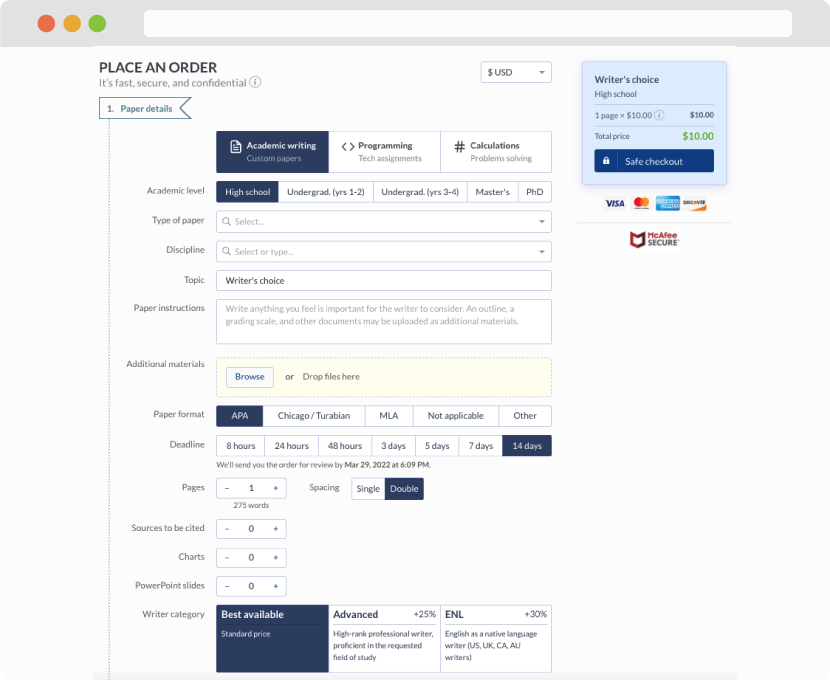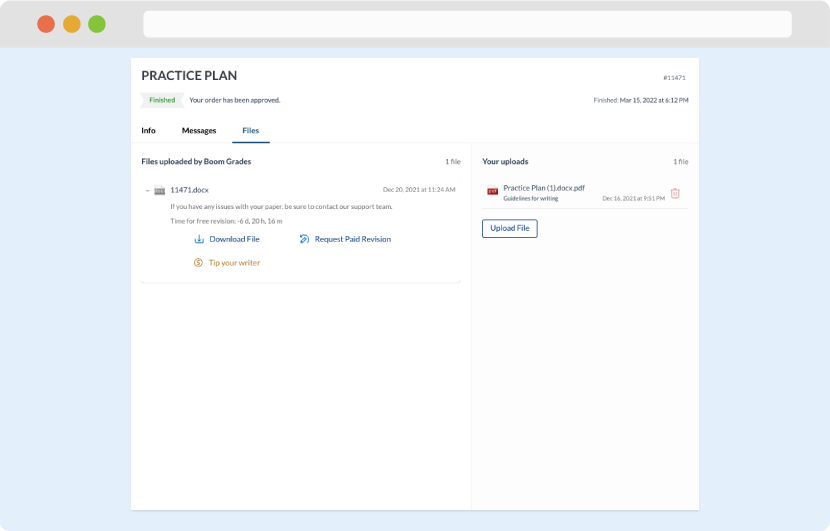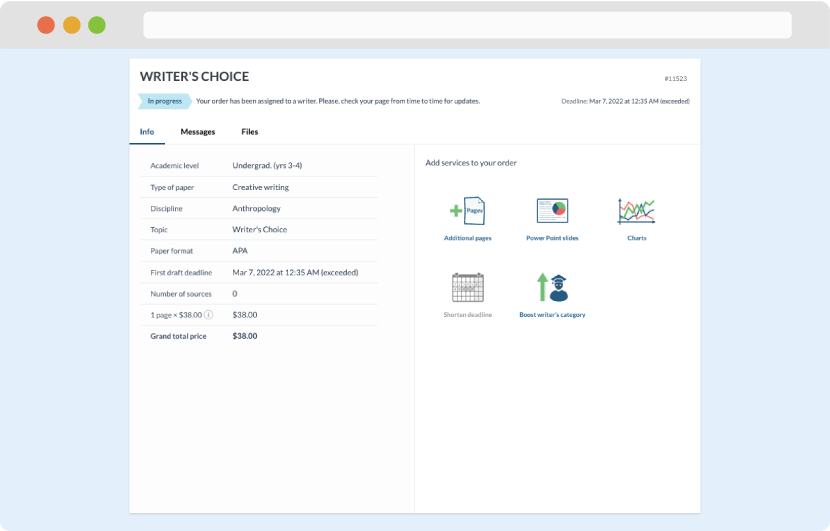Organizational Systems and Healthcare Transformation — D221
PRFA — NGM2
Task Overview Submissions Evaluation Report Competencies
738.4.1 : Compare Healthcare Delivery Models
The learner compares healthcare delivery models to facilitate value-based care, shared decision-making, and equitable patient-centered care.
738.4.2 : Describe Continuous Improvement Strategies
The learner describes evidence-based continuous improvement strategies that improve patient care.
738.4.3 : Compare Safety Standards
The learner compares current practice with patient safety standards to promote optimal patient outcomes.
738.4.4 : Examine Systems Redesign
The learner examines systems design in a high-reliability organization.
Patient safety is an integral part of value-based healthcare. Ensuring patient safety can lead to faster recovery times, which, in turn, leads to lower costs of care. When combined, these factors result in improved patient satisfaction. Ensuring patient safety requires professional nurses to be proactive in identifying potential safety concerns and proposing evidence-based solutions to mitigate those concerns across the healthcare continuum.
Your goal for this task is to clearly and concisely propose a recommendation that addresses an identified systems-level safety issue that affects patients within a healthcare setting, such as your practice or a colleague’s practice, using convincing evidence to promote the necessity for change.
Scenario Assumptions Requirements
Your submission must be your original work. No more than a combined total of 30% of the submission and no more than a 10% match to any one individual source can be directly quoted or closely paraphrased from sources, even if cited correctly. The similarity report that is provided when you submit your task can be used as a guide.
You must use the rubric to direct the creation of your submission because it provides detailed criteria that will be used to evaluate your work. Each requirement below may be evaluated by more than one rubric aspect. The rubric aspect titles may contain hyperlinks to relevant portions of the course.
Tasks may not be submitted as cloud links, such as links to Google Docs, Google Slides, OneDrive, etc., unless specified in the task requirements. All other submissions must be file types that are uploaded and submitted as attachments (e.g., .docx, .pdf, .ppt).
A. Discuss a systems-level safety concern in a healthcare setting by applying the situation, background, assessment, recommendation (SBAR) format by doing the following:
1. Describe a healthcare-related situation (S) prompting a systems-level patient safety concern that has the potential to impact multiple patients.
2. Analyze background (B) information about the concern by doing the following:
a. Describe the data that support or would support the need for change.
b. Explain how one or more national patient safety standards apply to this situation.
3. Assess (A) the impact of the safety concern on the patient(s), staff, and the organization as situated in the identified healthcare setting.
a. Explain how the safety concern affects value for the patient(s) and the healthcare setting.
4. Recommend (R) an evidence-based practice change that addresses the safety concern.
a. Discuss how this recommendation aligns with the principles of a high-reliability organization.
b. Describe two potential barriers to the recommended practice change.
c. Identify two potential interventions to minimize the barriers from part A4b to the recommended practice change.
d. Discuss the significance of shared decision-making among the healthcare setting’s relevant stakeholders in implementing this recommendation.
e. Describe an outcome measure that could be used to evaluate the results of the recommendation.
f. Describe the care delivery model currently being used in the healthcare setting.
i. Explain how the current care delivery model in the healthcare setting identified in part A4f would be impacted by the recommended change in part A4.
B. Acknowledge sources, using in-text citations and references, for content that is quoted, paraphrased, or summarized.
C. Demonstrate professional communication in the content and presentation of your submission.
File Restrictions File name may contain only letters, numbers, spaces, and these symbols: ! – _ . * ‘ ( ) File size limit: 200 MB File types allowed: doc, docx, rtf, xls, xlsx, ppt, pptx, odt, pdf, csv, txt, qt, mov, mpg, avi, mp3, wav, mp4, wma, flv, asf, mpeg, wmv, m4v, svg, tif, tiff, jpeg, jpg, gif, png, zip, rar, tar, 7z Rubric A1:SAFETY CONCERN
| Not Evident
The submission does not describe a healthcare-related situation. |
Approaching Competence
The submission describes a healthcare-related situation, but the situation would not be regarded as a plausible systems-level patient safety concern or does not have the potential to impact multiple patients given current healthcare practices. |
Competent
The submission describes a healthcare-related situation that could be regarded as a plausible systems-level patient safety concern that has the potential to impact multiple patients given current healthcare practices. |
| Not Evident
The submission does not describe any data. |
Approaching Competence
The submission describes data, but the description is general in nature, or the described data do not demonstrate the need for change to address the situation in part A1. |
Competent
The submission describes specific data that demonstrate the need for change to address the situation in part A1. |
A2b:NATIONAL SAFETY STANDARD(S)
| Not Evident
An explanation referencing at least 1 national patient safety standard is not provided. |
Approaching Competence
The explanation references at least 1 national patient safety standard but does not correctly address how each referenced standard applies to the situation described in part A1. |
Competent
The explanation references at least 1 national patient safety standard and correctly addresses how each referenced standard applies to the situation described in part A1. |
| Not Evident
The submission does not discuss the impact of the safety concern from part A1. |
Approaching Competence
The submission does not logically discuss the impact of the safety concern described in part A1 as it specifically relates to the patient(s), staff, or healthcare setting. |
Competent
The submission logically discusses the impact of the safety concern described in part A1 as it specifically relates to the patient(s), staff, and healthcare setting. |
| Not Evident
An explanation of how the safety concern from part A1 affects value for the patient(s) and the healthcare setting is not provided. |
Approaching Competence
The submission explains how the safety concern from part A1 affects value for the patient(s) and the healthcare setting, but the explanation is illogical or contains inaccuracies. |
Competent
The submission logically and accurately explains how the safety concern from part A1 affects value for the patient(s) and the healthcare setting. |
A4:EVIDENCE-BASED PRACTICE CHANGE
| Not Evident
The submission does not provide a recommendation for a practice change. |
Approaching Competence
The submission provides a recommendation for a practice change, but the recommendation is not evidence-based. Or it is irrelevant to the safety concern described in part A1 or would not logically address the concern. |
Competent
The submission provides a recommendation for an evidence-based practice change that is relevant to the safety concern described in part A1 and would logically address the concern. |
A4a:HIGH-RELIABILITY ORGANIZATION
| Not Evident
The submission does not discuss how the recommendation in part A4 aligns with the principles of any organization. |
Approaching Competence
The submission discusses how the recommendation in part A4 aligns with the principles of an organization, but the alignment discussed is not specific to a high-reliability organization. |
Competent
The submission accurately discusses how the recommendation in part A4 aligns with the principles of a high-reliability organization. |
| Not Evident
The submission does not describe any potential barriers to the recommended practice change. |
Approaching Competence
The submission describes only 1 potential barrier to the recommended practice change. Or the description is irrelevant to the safety concern in part A1. |
Competent
The submission describes 2 potential barriers to the recommended practice change that are relevant to the safety concern in part A1. |
| Not Evident
The submission does not identify any potential interventions to minimize the barriers from part A4b to the recommended practice change. |
Approaching Competence
The submission identifies only 1 potential intervention that could minimize the barriers from part A4b to the recommended practice change. Or 1 or both interventions are not relevant to the recommended practice change. |
Competent
The submission identifies 2 potential interventions that could minimize the barriers from part A4b to the recommended practice change. |
| Not Evident
The submission does not discuss the significance of shared decision-making among the healthcare setting’s stakeholders in implementing the recommendation in part A4. |
Approaching Competence
The submission does not logically discuss the significance of shared decision-making among the healthcare setting’s relevant stakeholders in implementing the proposed recommendation in part A4. Or the discussion is general in nature or does not specifically relate to the implementation of the proposed recommendation in part A4. |
Competent
The submission logically discusses the significance of shared decision-making among the healthcare setting’s relevant stakeholders, and the discussion specifically relates to the implementation of the proposed recommendation in part A4. |
| Not Evident
The submission does not describe any outcome measures that could be used to evaluate the results of the recommendation in part A4. |
Approaching Competence
The submission describes an outcome measure, but it could not be used to evaluate the results of the proposed recommendation in part A4. Or the outcome measure is irrelevant to the proposed recommendation in part A4. |
Competent
The submission describes a relevant outcome measure that could be used to evaluate the results of the proposed recommendation in part A4. |
| Not Evident
The submission does not describe the care delivery model currently being used in the healthcare setting. |
Approaching Competence
The submission identifies a care delivery model currently being used in the healthcare setting but does not describe the care delivery model. Or the description does not include sufficient detail. |
Competent
The submission thoroughly describes the care delivery model currently being used in the healthcare setting. |
A4fi:IMPACT ON CARE DELIVERY MODEL
| Not Evident
The submission does not explain how the current care delivery model in the healthcare setting would be impacted by the change in part A4. |
Approaching Competence
The submission explains how the care delivery model in the healthcare setting would be impacted, but it does not align with the care model identified in part A4f, or it does not align with the recommended change in part A4, or the explanation is not logical. |
Competent
The submission logically explains how the current care delivery model in the healthcare setting identified in part A4f would be impacted by the recommended change in part A4. |
| Not Evident
The submission does not include both in-text citations and a reference list for sources that are quoted, paraphrased, or summarized. |
Approaching Competence
The submission includes in-text citations for sources that are quoted, paraphrased, or summarized and a reference list; however, the citations or reference list is incomplete or inaccurate. |
Competent
The submission includes in-text citations for sources that are properly quoted, paraphrased, or summarized and a reference list that accurately identifies the author, date, title, and source location as available. |
| Not Evident
Content is unstructured, is disjointed, or contains pervasive errors in mechanics, usage, or grammar. Vocabulary or tone is unprofessional or distracts from the topic. |
Approaching Competence
Content is poorly organized, is difficult to follow, or contains errors in mechanics, usage, or grammar that cause confusion. Terminology is misused or ineffective. |
Competent
Content reflects attention to detail, is organized, and focuses on the main ideas as prescribed in the task or chosen by the candidate. Terminology is pertinent, is used correctly, and effectively conveys the intended meaning. Mechanics, usage, and grammar promote accurate interpretation and understanding. |
Standard Notes Reference List Web Links Supporting Documents
D221 Practice Improvement Plan Proposal
Discuss a systems-level safety concern in a healthcare setting by applying the situation, background, assessment, recommendation (SBAR) format by doing the following:
Analyze background (B) information about the concern by doing the following:
Describe the data that support or would support the need for change.
Explain how one or more national patient safety standards apply to this situation.
Assess (A) the impact of the safety concern on the patient(s), staff, and the organization as situated in the identified healthcare setting.
Explain how the safety concern affects value for the patient(s) and the healthcare setting.
Recommend (R) an evidence-based practice change that addresses the safety concern.
Discuss how this recommendation aligns with the principles of a high-reliability organization.
Describe two potential barriers to the recommended practice change.
Identify two potential interventions to minimize the barriers from part A4b to the recommended practice change.
Discuss the significance of shared decision-making among the healthcare setting’s relevant stakeholders in implementing this recommendation.
Describe an outcome measure that could be used to evaluate the results of the recommendation.
Describe the care delivery model currently being used in the healthcare setting.
A4fi. Impact on Care Delivery Model
Explain how the current care delivery model in the healthcare setting identified in part A4f would be impacted by the recommended change in part A4.
The Reference Page always starts on a new page, never at the tail end of the final paragraph. For tips on using APA style, including in-text citations and Reference page entries, please refer to the Writing Studio in the WGU Academic Coaching Center CLICK HERE . Any hyperlinks on the reference page must work – the evaluators WILL check these. Do not hyperlink to a page within an area accessible only through personal login, because the evaluator does not have your login and password.
Needs help with similar assignment?
We are available 24×7 to deliver the best services and assignment ready within 3-12 hours? PAY FOR YOUR FIRST ORDER AFTER COMPLETION..
Get Answer Over WhatsApp
Order Paper Now
Do you have an upcoming essay or assignment due?
Order a custom-written, plagiarism-free paper
If yes
Order Paper Now
Essay Writing Service Features
Our Experience
No matter how complex your assignment is, we can find the right professional for your specific task. Academiarank is an essay writing company that hires only the smartest minds to help you with your projects. Our expertise allows us to provide students with high-quality academic writing, editing & proofreading services.
Free Features
Free revision policy
$10Free bibliography & reference
$8Free title page
$8Free formatting
$8How Our Essay Writing Service Works

First, you will need to complete an order form. It's not difficult but, in case there is anything you find not to be clear, you may always call us so that we can guide you through it. On the order form, you will need to include some basic information concerning your order: subject, topic, number of pages, etc. We also encourage our clients to upload any relevant information or sources that will help.
Complete the order form
Once we have all the information and instructions that we need, we select the most suitable writer for your assignment. While everything seems to be clear, the writer, who has complete knowledge of the subject, may need clarification from you. It is at that point that you would receive a call or email from us.
Writer’s assignment
As soon as the writer has finished, it will be delivered both to the website and to your email address so that you will not miss it. If your deadline is close at hand, we will place a call to you to make sure that you receive the paper on time.
Completing the order and download